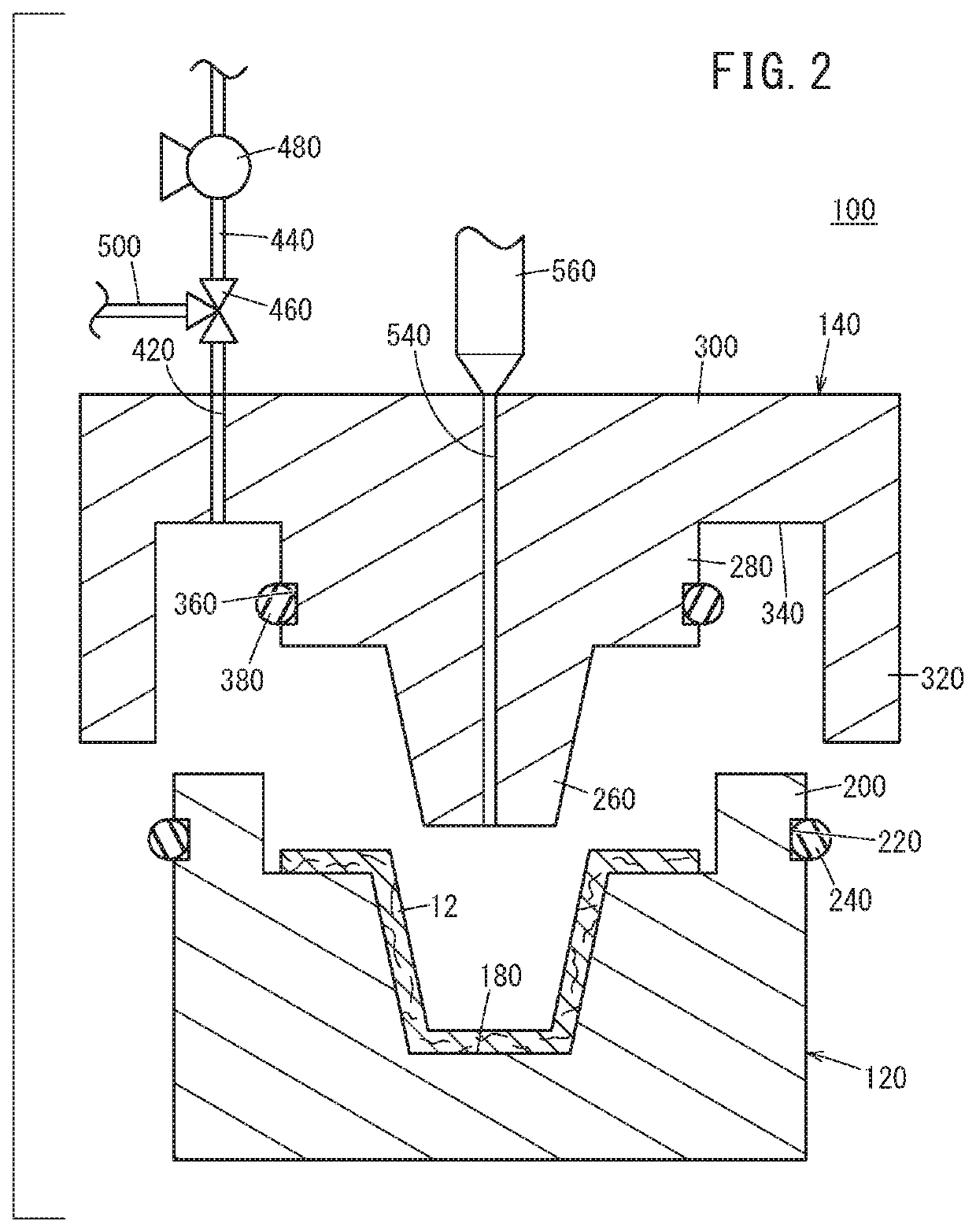Method for producing a fiber-reinforced plastic molded article
a fiber-reinforced, plastic molded article technology, applied in the direction of transportation and packaging, layered products, chemical instruments and processes, etc., can solve the problems of difficult to impregnate the fiber base material with liquid matrix resin, bending or the like in the surface component, etc., to improve the flexural properties, increase the fiber volume contents of the surface components, and produce efficiently
- Summary
- Abstract
- Description
- Claims
- Application Information
AI Technical Summary
Benefits of technology
Problems solved by technology
Method used
Image
Examples
Embodiment Construction
[0035]A preferred embodiment of a fiber-reinforced plastic molded article (an FRP molded article) and a related production method according to the present invention will be described in detail below with reference to the accompanying drawings.
[0036]FIG. 1 is a schematic vertical cross-sectional view of a fiber-reinforced plastic molded article 10 according to this embodiment. The fiber-reinforced plastic molded article 10 contains a fiber base material 12, and a matrix resin 14 composited with the fiber base material 12 (see FIG. 4). The fiber base material 12 contains a first continuous fiber component 16, a non-woven fabric 18, and a second continuous fiber component 20, which are stacked in this order and are integrated by needle punching as described later. Therefore, fiber pieces oriented in the thickness direction of the fiber base material 12 are formed between the first continuous fiber component 16 and the non-woven fabric 18 and between the second continuous fiber componen...
PUM
| Property | Measurement | Unit |
|---|---|---|
| pressure | aaaaa | aaaaa |
| volume | aaaaa | aaaaa |
| thickness | aaaaa | aaaaa |
Abstract
Description
Claims
Application Information
 Login to View More
Login to View More - R&D
- Intellectual Property
- Life Sciences
- Materials
- Tech Scout
- Unparalleled Data Quality
- Higher Quality Content
- 60% Fewer Hallucinations
Browse by: Latest US Patents, China's latest patents, Technical Efficacy Thesaurus, Application Domain, Technology Topic, Popular Technical Reports.
© 2025 PatSnap. All rights reserved.Legal|Privacy policy|Modern Slavery Act Transparency Statement|Sitemap|About US| Contact US: help@patsnap.com



